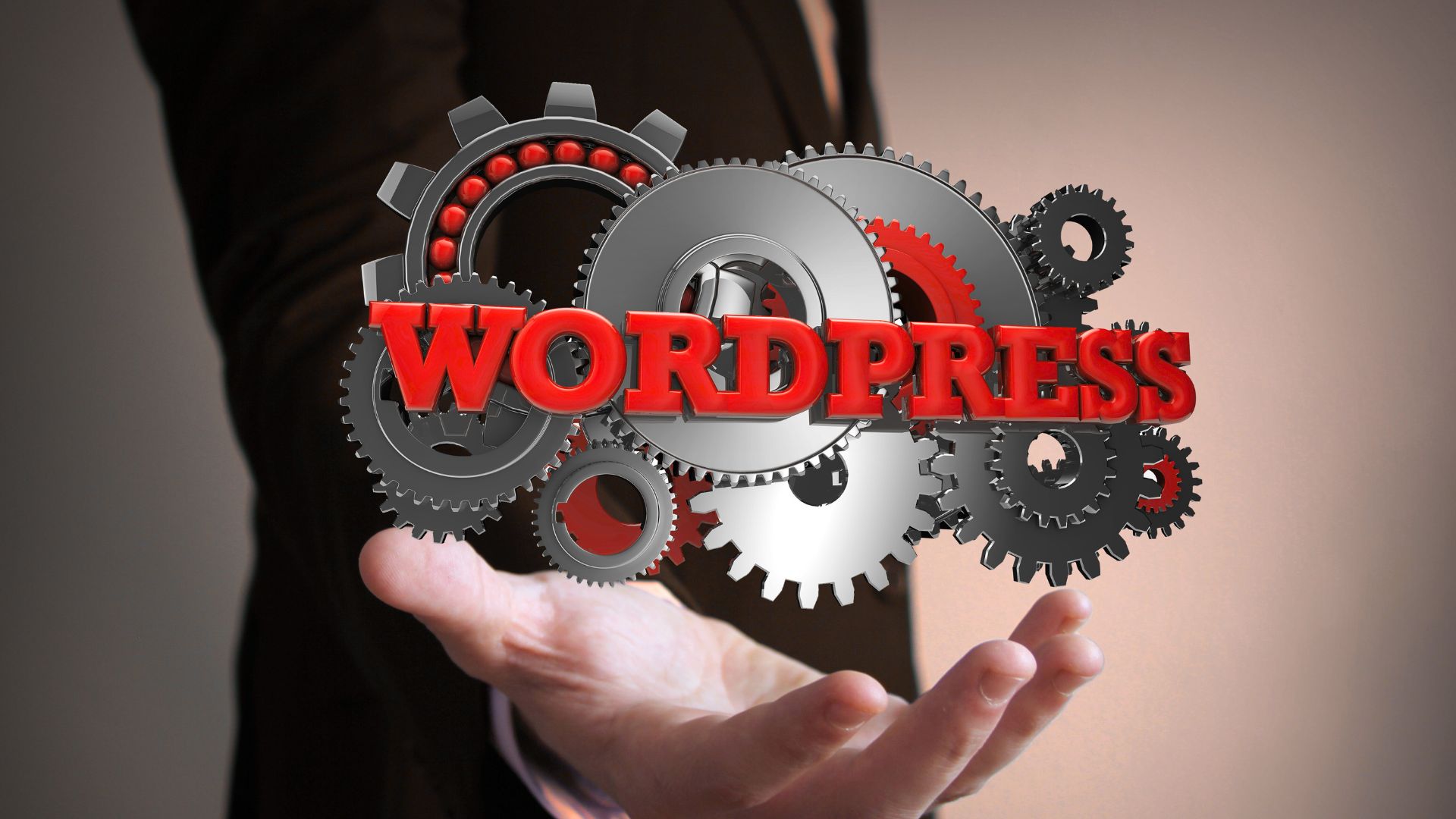Running a WordPress site in 2025 has changed. Tools have advanced, expectations have grown, and security threats are smarter than ever.
AI-driven hacks are now a reality, and Google’s performance standards — especially for mobile — mean that speed and stability are critical. If your website helps you attract leads, engage customers, or make sales, keeping it well-maintained is essential.
Why WordPress Maintenance Matters in 2025

WordPress remains the most widely used content management system, and that also makes it one of the most frequently targeted.
An estimated 30,000 websites are compromised every day, many of them small business sites using WordPress. Attacks have become faster, automated, and more precise.
At the same time, Google continues to prioritise site speed, mobile responsiveness, and technical stability in its rankings. Even small lapses — like outdated plugins or short downtime — can negatively affect visibility and user trust.
Routine maintenance helps you stay secure and fast. If you don’t have time to manage it yourself, a professional wordpress maintenance service — such as those from Fly High Web — can take care of it for you.
Weekly Maintenance Tasks to Keep Your Site Running Smoothly
A few quick weekly checks can prevent more serious problems later on. Here’s what to focus on:
Update Plugins and Themes
Outdated software is a leading cause of broken sites. Logging in regularly and keeping everything updated can help avoid larger issues.
Moderate Comments
Spam can accumulate quickly and affect your site’s speed and reputation. Clearing it out keeps things tidy and professional.
Check Daily Backups
Verify that your backup system is running correctly by reviewing the logs or storage location. It’s a small step that provides big reassurance.
Use an Uptime Monitor
Tools like Uptime Robot or Jetpack Monitor will alert you to downtime, so you find out before your visitors do.
Test Contact Forms
Submit a test form or try a test purchase to ensure your contact points and transactions are still working.
Check for Broken Links
Broken links are bad for SEO and user experience. Use a plugin or browser extension to detect and fix them quickly.
Clear out Post and Page Drafts
Old drafts, revisions, and deleted items can build up and affect performance. Regular cleanups help keep your site fast.
Monthly Maintenance Checklist for Optimal Performance

Monthly checks go a bit deeper to ensure your website stays efficient and reliable.
Audit Plugins
Remove anything you’re not using, especially plugins that haven’t been updated in a while. Unmaintained plugins often cause conflicts and security issues.
Run Speed Tests
Use tools like GTmetrix or PageSpeed Insights to assess performance and pinpoint areas slowing down your site.
Test Responsiveness
View your site on different devices to ensure layout, content, and functionality display correctly on mobile and tablet.
Review Analytics
Look for unexpected drops or spikes in traffic. It may indicate a technical issue or something worth addressing in your content.
Scan for Malware
Use your security plugin — or a service like Sucuri — to check for any hidden threats.
Update your WordPress Core Version
If there’s a stable update available, apply it after testing. Core updates are essential for both performance and protection.
Security Best Practices for a Safe WordPress Website
So, the basics are sorted — but there’s more you can do. Set up notifications for login attempts or odd file changes. Steer clear of usernames like “admin” and use strong, unique passwords. Once a month, glance over your security plugin settings — just to be sure nothing’s fallen out of place.
You might also want to consider limiting login access by IP address if you and your team always work from the same locations. For added peace of mind, schedule automated malware scans and enable real-time alerts — these can save you hours of panic if something goes wrong. Lastly, remove any themes or plugins you’re not using. Even inactive software can become a target.
How to Keep Themes and Plugins Up to Date

Staying updated protects your site and keeps everything running smoothly.
Follow this process:
- Test updates on a staging site first
- Read changelogs to anticipate any major changes
- Update plugins first, then themes, then WordPress core
- After updates, clear the cache and check the front end
- If anything breaks, use your backup to roll back
Outdated plugins or themes often cause compatibility issues and leave sites vulnerable. Updates aren’t just improvements; they’re often critical patches.
Optimising Your Database and Site Speed
Think of your database as your site’s attic. If you never sort it out, it just gets full of junk. Old revisions, spam comments, unused settings — they all slow things down.
Plugins like WP-Optimise make cleanup simple. You can even automate it. Less clutter means faster load times.
But it’s not only about speed. A bloated database can cause timeouts and errors, especially on shared hosting. Aim to clean your database monthly. And while you’re at it, check if your hosting provider offers database optimisation tools — some platforms do it for you during scheduled maintenance windows. You’ll usually get a snappier dashboard too, which makes content edits much smoother.
Backups and Disaster Recovery Planning

Not all backups are created equal. Daily incremental backups are light and efficient, especially for busy sites. Store them somewhere safe — Dropbox or Google Drive work well.
Run a restore test every few months. It’s like a fire drill: annoying, but reassuring. When things go wrong, knowing exactly what to do makes all the difference.
It’s a good idea to label and date your backup files clearly, so you’re not scrambling through folders if disaster strikes. If your hosting service includes backups, double-check their frequency and storage limits — some only keep a few days’ worth. Lastly, consider keeping multiple copies in different places (local and cloud) in case one fails. The more redundant your backups, the safer your site will be.
Monitoring and Analytics: What to Track in 2025
You’re not just watching traffic anymore. You’re checking whether your site’s still doing what it’s supposed to.
- Page load speed
- Bounce and exit rates
- Conversion paths
- Uptime logs
If something looks off — maybe visitors are leaving a checkout page or your bounce rate jumps — that could mean technical issues. Catching these early means fewer lost leads.
And in 2025, it’s more important than ever. User expectations are sharper, attention spans are shorter, and small errors can snowball quickly. Monitoring your analytics helps you respond to changes fast — whether that’s updating broken content, fixing load delays, or tweaking your layout to keep people engaged.
User Management and Access Controls
Don’t give everyone admin access. Most users only need editing rights. Use clear roles, remove inactive accounts, and turn on two-factor login.
Schedule a quick review of your user list every couple of months. It’ll help keep things clean and secure.
Try to avoid shared logins — individual accounts make it easier to track changes and pinpoint issues. When working with freelancers or contractors, always give temporary access with limited permissions, and set a reminder to remove them once the work is done. Strong passwords are a must, but password managers can help make this easier for everyone involved. The fewer points of access, the fewer places things can go wrong.
Tools and Services for Automating WordPress Maintenance
If regular logins and updates aren’t practical, automation tools can handle the essentials:
- WP Umbrella – Great for solo site owners, includes backups and reports
- ManageWP – Ideal for managing multiple sites
- InfiniteWP – Designed for advanced users or agencies
These tools can save hours by automating routine maintenance tasks.
A well-maintained website is faster, more secure, and more reliable, which means better rankings, happier visitors, and fewer surprises.
If managing all this feels overwhelming, Fly High Web offers tailored WordPress maintenance services to suit your business. Whether you’re a freelancer, shop owner, or agency, we’ll take care of your site so you can focus on what matters most.
